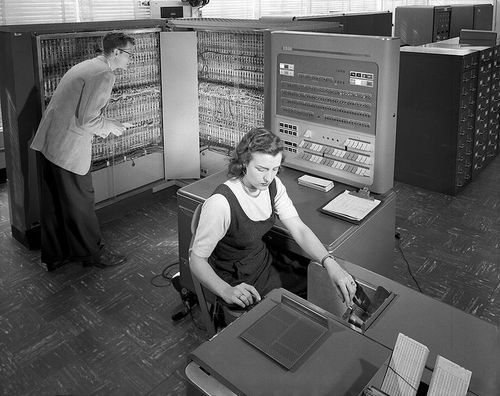Women as technology
Today I visited an interesting exhibition at the Design Museum Den Bosch called ‘Vrouwen als technologie’ (Women as Technology). It provides a powerful perspective on how women’s roles in technology have been shaped, and often marginalised, over time.
It is quite sad to see how this marginalisation persists. For example, the film industry cemented the image of the “computer nerd” as a man, while in the early days of computing, it was often women who operated the large IBM machines. It was thought they could work with more focus and precision for longer periods, a skill deemed essential for operating both early computers and complex machinery like textile looms. This shift from operator to a male-dominated field is a recurring theme.

The exhibition shows that technology is rarely neutral; it reflects the prevailing societal views of its time. It explores this through four key, and sometimes problematic, roles assigned to women.
Some roles of women in technology
The museum organises its narrative around four themes: women as calculators, homemakers, incubators, and lust machines.
Calculators and assistants
This section reminded me of how the first computers were marketed. The computing power of early machines in the 1940s was sometimes measured in “girl-hours”. When the work became more valued, it symbolically became more ‘masculine’. We see this today with virtual assistants like Siri and Alexa, which are given female names and voices by default, reinforcing the idea of women in service roles.
Incubators
The exhibition also touches on more confronting topics, such as how medical technology has been designed by men for women. There are some gruesome stories. The design of the first incubator (couveuse in Dutch) treated the womb as a kind of industrial machine, reducing a natural process to a mechanical one. An 1875 papier-mâché model of a uterus, presented completely isolated from the woman herself, is an example of this detached, clinical view.
Lust machines
The objectification continues with modern technology. AI robots and chatbots are often modelled on Western ideals of female beauty. It is telling that among the most popular applications for some large language models are chats with fictional female characters. The exhibition features a hyper-realistic sex robot from RealDoll, which highlights how technology is used to fulfil male desires.
The exhibition is rightly called Women as technology: not only because women are often reduced to machines, but also because they are interwoven with technology – as a driving force, as a critical consumer and as a brilliant designer. In short: as infinitely more than the smiling users of household appliances and secret vibrators.
— Doortje Lenders, Vrij Nederland
The themes feel particularly relevant today. With major societal shifts like the reversal of Roe v. Wade in the United States and the growing online popularity of the ‘trad wife’ movement, it seems we are reinforcing some of the very stereotypes this exhibition critiques.
This exhibition does an excellent job of showing the ambivalent relationship between women and technology. It reveals how technology has both shaped and been shaped by these roles, but it also highlights the important contributions women have made and continue to make in the fields of computing, medicine, and design. It is a valuable perspective.